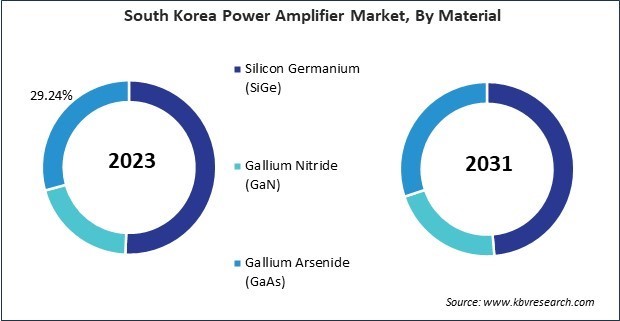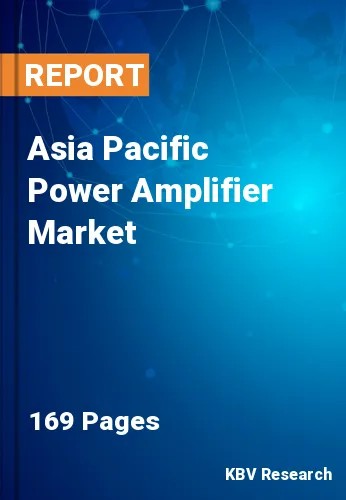The Asia Pacific Power Amplifier Market would witness market growth of 10.7% CAGR during the forecast period (2024-2031). In the year 2022, the Asia Pacific market's volume surged to 10,103.3 thousand units, showcasing a growth of 21.0% (2019-2022).
In the power amplifier market, various types of audio power amplifiers cater to diverse applications and preferences. Among these, Class-D amplifiers have witnessed significant growth due to their high efficiency and compact size, making them ideal for portable devices and space-constrained installations. Class-AB amplifiers remain prevalent, prized for their balanced performance and wide compatibility with different speaker configurations. Therefore, in India, the use of audio amplifier is expected to reach 795.15 thousand units by 2031.

The China market dominated the Asia Pacific Power Amplifier Market by Country in 2023, and would continue to be a dominant market till 2031; thereby, achieving a market value of $2,858.4 million by 2031. The Japan market is registering a CAGR of 9.9% during (2024 - 2031). Additionally, The India market would showcase a CAGR of 11.4% during (2024 - 2031).
The power amplifier market is subject to ongoing technological advancements, emerging trends, and disruptive innovations shaping its trajectory and influencing market dynamics. The adoption of advanced semiconductor technologies such as gallium nitride (GaN), silicon carbide (SiC), and silicon germanium (SiGe) has revolutionized the design and performance of power amplifiers, enabling higher efficiency, faster switching speeds, and greater power density. These semiconductor materials offer superior thermal conductivity, breakdown voltage, and electron mobility compared to traditional silicon, making them ideal candidates for high-power and high-frequency applications.
Furthermore, the 5G wireless technology rollout has fueled demand for power amplifiers that support higher data rates, wider bandwidths, and lower latencies in next-generation wireless networks. Power amplifiers with advanced modulation schemes, envelope tracking (ET), and beamforming capabilities are essential for realizing the full potential of 5G technology and delivering enhanced mobile broadband, ultra-reliable low-latency communication (URLLC), and massive machine-type communication (mMTC) services.
India's growing middle class and increasing disposable income drive demand for consumer electronics products such as smartphones, smart TVs, and home appliances. Power amplifiers are integral to the operation of these devices, enabling audio amplification, wireless connectivity, and other functionalities. As per Invest India, the nation's electronics production will be $300 Bn by FY26. The domestic production of electronics is valued at $101 Bn in FY23 and is segmented (based on FY22 data) as Mobile Phones (43%), IT Hardware (5%), and Consumer Electronics (12%). Hence, the expanding electronics and healthcare sectors in the Asia Pacific will assist in the growth of the regional power amplifier market.
Free Valuable Insights: The Global Power Amplifier Market is Predict to reach USD 24 billion by 2031, at a CAGR of 10.3%
Based on Type, the market is segmented into Audio, Radio-frequency, and Linear. Based on End User, the market is segmented into Consumer Electronics, Telecommunication, Healthcare, Aerospace & Defense, and Others. Based on Material, the market is segmented into Silicon Germanium (SiGe), Gallium Nitride (GaN), and Gallium Arsenide (GaAs). Based on countries, the market is segmented into China, Japan, India, South Korea, Taiwan, Malaysia, and Rest of Asia Pacific.
By Type (Volume, Thousand Units, USD Billion, 2020-2031)
By End User (Volume, Thousand Units, USD Billion, 2020-2031)
By Material
By Country (Volume, Thousand Units, USD Billion, 2020-2031)
Our team of dedicated experts can provide you with attractive expansion opportunities for your business.

